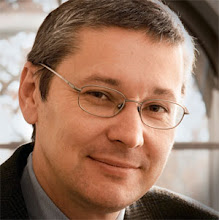David Autor on Inequality
From a recent interview of the MIT economist (discussing this article):
Q. You are focused on inequality among the so-called “99 percent,” not between the 1 percent and the 99 percent. Why?
A. There’s a real national debate about the significance and causes of inequality. This public debate is dominated by the discussion of the top 1 percent. And the top 1 percent is important, but focusing on the top 1 percent conveys the message that the game is all rigged, that if you’re not in the elite stratum, there’s nothing to shoot for. And that’s just not the case. The growth of skill differentials among the other 99 percent is arguably even more consequential than the rise of the 1 percent for the welfare of most citizens.
Here’s a concrete way to see it: The earnings gap between the median college-educated two-income family and the median high school-educated two-income family rose by $28,000 between 1979 and 2012. This [shift] — which excludes the top 1 percent, since we’re focusing on medians — is four times as large as the redistribution that has taken place from the bottom 99 percent to the top 1 percent of households in the same period.


<< Home